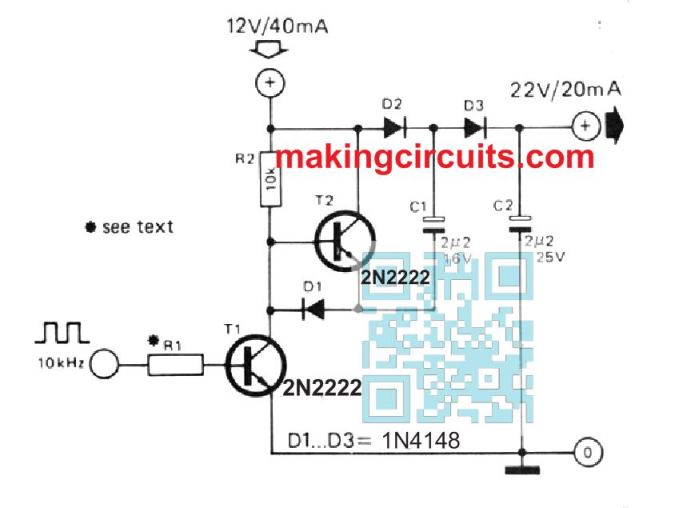The following small circuit will create a DC output that may be nearly 2 times the supply voltage. A square wave input is necessary of adequate amount to switch T1 totally on / off.
As soon as T1 is switched ON, C1 is charged to slightly below the supply voltage.
As soon as T1 is cut off, T2 is switched ON and this boosts the voltage on the negative terminal of C1 to just below the positive supply level.
This suggests that the voltage on the positive end of C1 is elevated to virtually two times the supply voltage, in order that C2 will eventually charge to this degree.
The circuit is amazingly efficient: the current consumed through the main supply is barely higher than double the output current. In the illustration demonstrated here, the efficiency is around 90%.
The value for R1 is determined by the amplitude of the square wave input: T1 may call for a base current of 0.5 - 1 mA.

Hello, i want to ask which one is C3? is it typo? thanks
Hello, yes there is a mistake. Actually C1 is wrongly mentioned as C2, and C2 is wrongly mentioned as C3…there’s no C3.
I will correct it soon.
Hi, mine is a question. Can i use a larger transistor so as to get higher output current from the circuit
Hi, changing only transistors will not help, you will have to increase the capacitor value also, because it is the capacitor uF that decides the output current